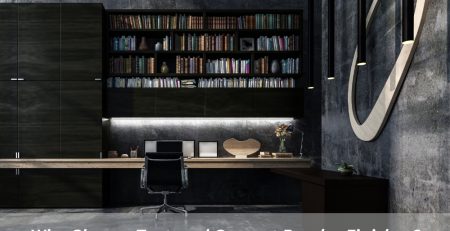How To Fix Hairline Cracks In Rendered Walls?
You’ve got wall cracks – what can you do about them? If you have noticed hairline cracks in your rendered walls, you may be wondering how to fix them. Hairline cracks are a common issue that can occur in rendered walls over time, and they can be caused by a variety of factors such as natural settling, weathering, or poor application.
While these cracks may seem minor at first, they can lead to more significant issues if left unaddressed. In this blog post, we’ll discuss some effective techniques on how to fix hairline cracks in rendered walls, so you can keep your walls looking smooth and seamless for years to come.
Have you ever wondered what causes hairline cracks in rendered walls?
Hairline cracks in rendered walls can occur due to various reasons, including:
-
Movement
If the substrate, i.e., the surface on which the render is applied, moves or expands and contracts, it can cause hairline cracks in the rendered surface.
-
Inadequate curing time
If the render is not allowed to cure properly, hairline cracks can appear. It is recommended to wait for at least 24 hours before painting rendered walls.
-
The incorrect ratio of the render mix
If the render mix contains an incorrect ratio of sand, cement, and other additives, it can cause hairline cracks in the rendered surface.
-
Application process
If the render is applied too thick or too thin, it can lead to hairline cracks. Applying the render in layers and allowing each layer to dry for at least 30 minutes before applying the next layer can help prevent this.
-
Surrounding area
If the rendered wall is located in an area with high wind or other environmental factors, it can cause hairline cracks in the rendered surface.
-
Structural issues
Hairline cracks can also be caused by underlying structural issues in the external walls. In such cases, it is important to address the structural issues before attempting any rendering or rendering crack repair.
How can you identify and evaluate the seriousness of hairline cracks?
Hairline cracks can be identified through a visual inspection of the exterior or interior walls. They appear as fine, narrow lines on the surface of the rendered wall. To evaluate the seriousness of the cracks, consider their width, length, and depth. Hairline cracks are typically less than an inch wide, and they may be a cosmetic issue rather than a structural one. However, if the cracks are wider than this or if they continue to grow in length or depth, they could indicate a more serious problem with the structural integrity of the wall.
What are some methods of repairing walls with hairline cracks?
There are several methods of repairing walls with hairline cracks, including:
-
Filling the cracks with a crack filler
This involves using a filler that is specifically designed to fill hairline cracks. Examples of such fillers include masonry filler, acrylic frame filler sealant, and acrylic window mastic. The filler is applied using a filling knife or craft knife. Excess filler is removed with a damp brush or wire brush. Once the filler has dried, the wall can be sanded and painted as required.
-
Applying an additional coating
If the cracks are very fine, it may be possible to simply apply an additional coat of render or paint. This can help to bridge the gap between the two sides of the crack, making it less visible. However, if the crack is larger, this method may not be sufficient.
-
Using a render repair kit
If the wall is rendered, a render repair kit can be used to fix hairline cracks. These kits usually contain a base coat and a top coat, which are applied in layers over the crack. The base coat is designed to provide a strong layer to support the top coat. It is used to create a smooth finish. The repair kit should be used in accordance with the manufacturer’s instructions.
-
Structural repairs
If the hairline cracks are indicative of a more serious issue with the wall’s structural integrity, more extensive repairs may be required. This may involve repairing the adjoining brickwork, cavity wall insulation, or addressing issues with the wall’s foundation. It is important to have any structural repairs carried out by a qualified professional.
In general, it is important to choose a repair method that is appropriate for the severity and cause of the hairline cracks. For cosmetic issues, simple filling or painting may be sufficient, while more extensive repairs may be necessary for more serious underlying issues.
How can you prevent hairline cracks?
Preventing hairline cracks in an exterior wall can be achieved by taking some precautions and following a few steps. Here are some methods that may help prevent hairline cracks:
-
Apply a Layer of Render
A layer of render can provide a level and flat surface. It reduces the likelihood of cracks developing.
-
Use a Good Quality Render Mix
Using a good quality render mix that has the correct ratio of sand, cement, and water is crucial in preventing hairline cracks from forming.
-
Prepare the Surface
You should thoroughly clean the surface to which the render will be applied, remove any debris and dust, and prepare it properly.
-
Apply the Render in Thin Coats
Applying the render in thin coats will help prevent the surface from becoming too heavy, which could lead to cracking.
-
Allow Adequate Time for Drying
You should allow each coat of render to dry sufficiently before applying the next one. This will prevent the surface from becoming too heavy too quickly, which can cause cracking.
-
Use a Flexible Filler
When repairing cracks, use a flexible filler that can withstand movement in the wall without cracking.
-
Regular Maintenance
Regular maintenance of the exterior wall can help identify any hairline cracks early, preventing them from developing into larger issues.
If you follow these steps, you can prevent hairline cracks from forming on your exterior wall, keeping it in good condition for longer.
All in all, you can easily fix hairline cracks in rendered walls. It helps prevent further damage and keeps your walls structurally sound. By following a step-by-step approach and using the right tools and materials, you can effectively repair the cracks and restore your walls to their original condition. So if you’ve got wall cracks, don’t panic. With the right knowledge and techniques, you can easily fix the problem and keep your walls looking great for years to come.
Contact Jims Rendering Sydney today for more information about fixing cracks in rendered walls. Our team of experienced professionals can provide advice and assistance on external wall crack repair, ensuring that your walls remain safe and structurally sound.











